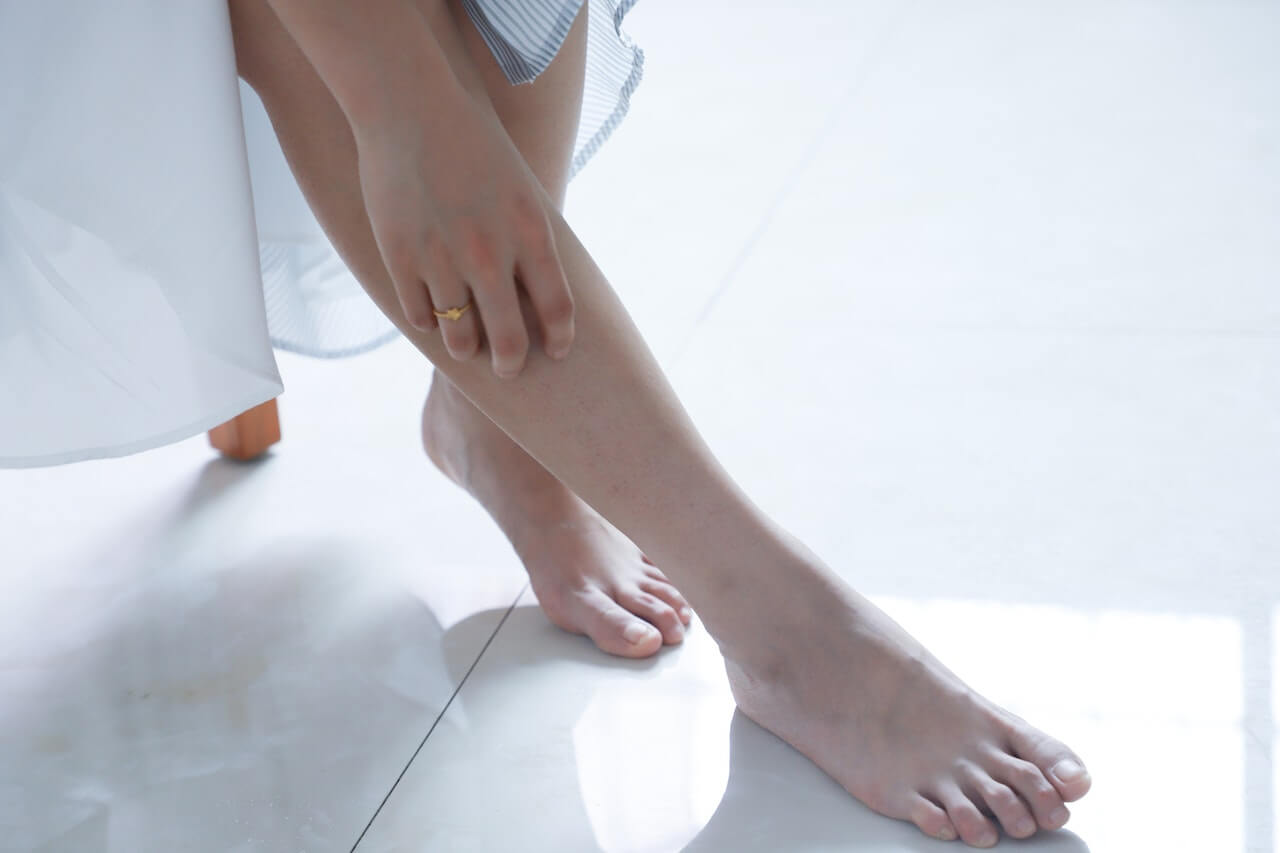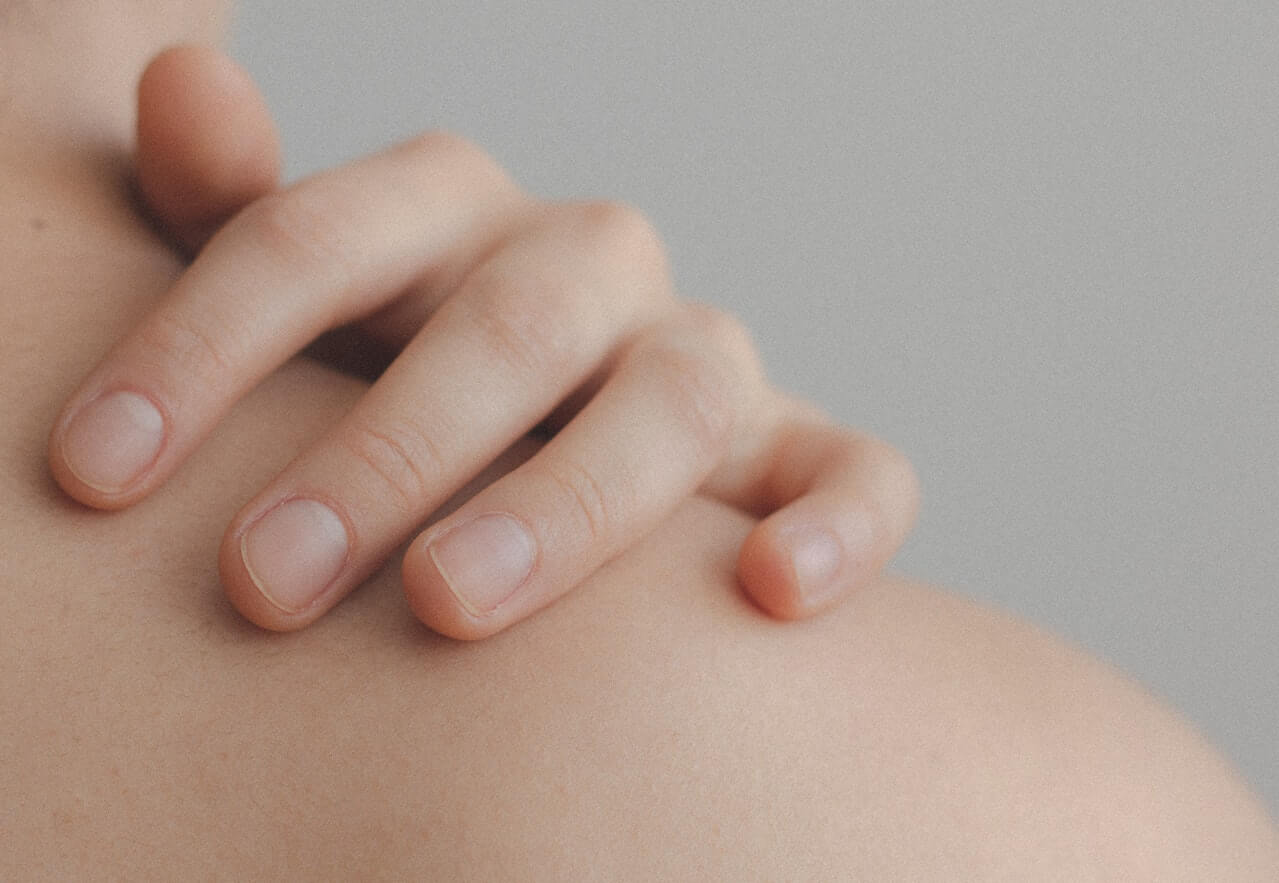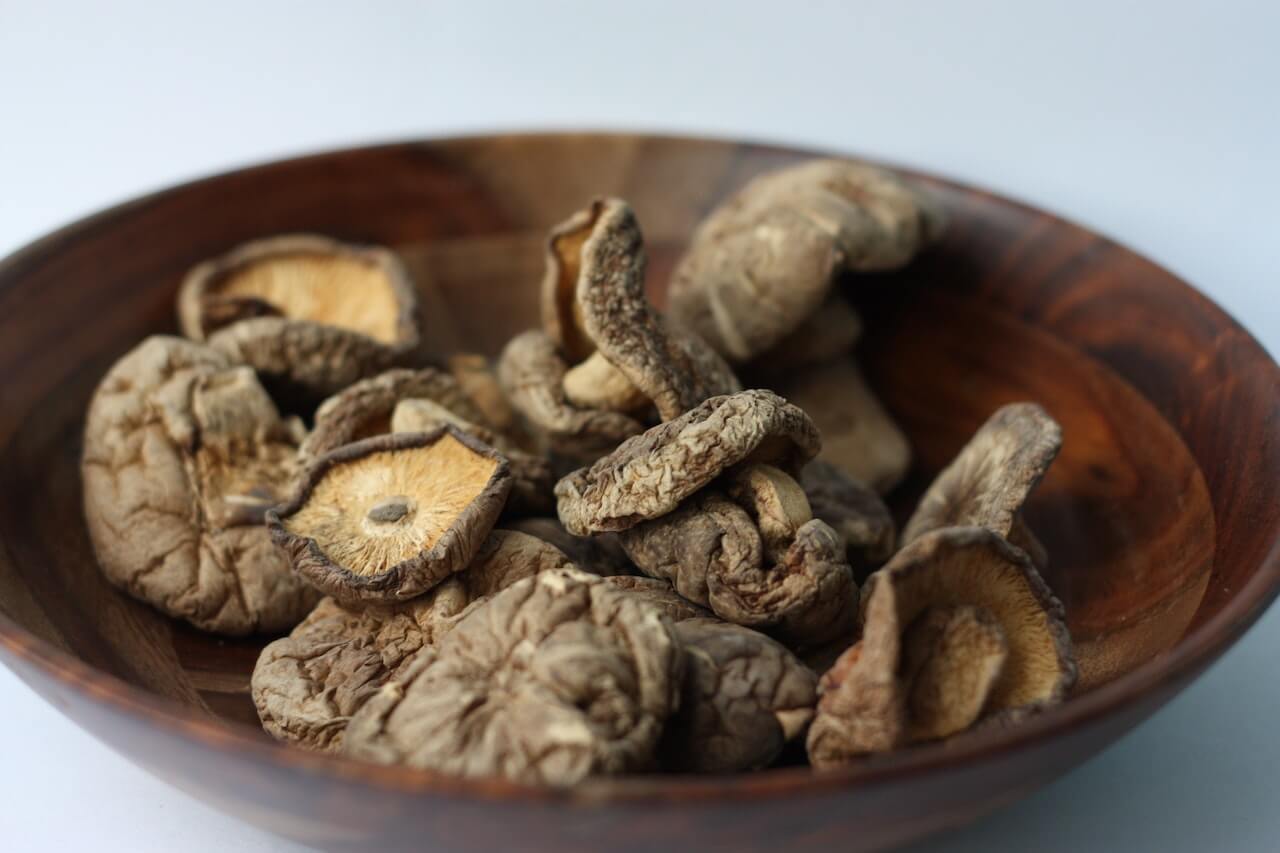It's a sensation that plagues countless individuals living with diabetes—persistent, unrelenting itching. The relentless urge to scratch can disrupt daily life, but it's more than a minor nuisance. Diabetic itching, a common yet often overlooked symptom, can be a crucial indicator of underlying health issues.
In this article, we’ll cover the ins and outs of diabetic itching, shedding light on its causes, symptoms, and effective strategies for prevention and relief. Whether you've been grappling with this discomfort or wish to understand its implications, this article aims to provide valuable insights that will help you take control of your well-being.
{{mid-cta}}
Diabetes and Itching: How They Relate
Itchy skin, scientifically known as pruritus, is not random in people with type 2 diabetes. It's closely tied to the elevated blood sugar levels in your body.
Chronically high blood sugar is a good sign your metabolic health is out of balance. Hyperglycemia is the hallmark of diabetes, and these elevated glucose levels, if left uncontrolled, can have far-reaching effects throughout your body. One of the most notable impacts is on your skin.
The Fungus Factor
Your skin is your body's largest organ and serves as the first line of defense against external threats. However, under the persistent influence of high blood sugar, your skin becomes very vulnerable. Why? Because sugar is like fuel for certain types of microorganisms, especially fungi.
Fungi thrive in warm, moist environments, and when your blood sugar levels are consistently high, they create the perfect breeding ground beneath your skin's surface. This can lead to fungal infections such as candidiasis and ringworm, which are notorious for causing itching.1
Cellular Damage and Itching
In addition to fueling fungal growth, uncontrolled blood sugar levels can damage skin cells. High glucose levels can cause glycation—a process in which sugar molecules bond with proteins in your skin. This can lead to the stiffening and thickening of the skin, making it prone to itching.2
Diabetes can also negatively impact blood circulation, reducing the supply of oxygen and nutrients to your skin. This can result in dryness and the formation of lesions more susceptible to itching.3
Causes of Diabetic Itching
Diabetic itching can manifest for various reasons. Here are some of the main causes of diabetic itching:
1. High Blood Sugar Levels
Elevated blood sugar levels can wreak havoc on your body and skin. When your blood sugar remains consistently high, glycation can occur, resulting in skin stiffness, thickening, and dryness, all contributing to itching.
2. Neuropathy
Diabetic neuropathy is a nerve disorder that commonly accompanies diabetes. It occurs when high blood sugar levels cause nerve damage throughout the body, including those responsible for transmitting sensory signals from the skin. As a result, you may experience abnormal sensations, including itchy skin, tingling, and burning, due to nerve damage.3
People who have diabetic neuropathy may also develop blisters. Diabetic blisters can occur on the backs of fingers, hands, toes, feet, and sometimes on legs or forearms.
3. Poor Circulation
Diabetes can also impact your circulatory system, reducing blood flow to various body parts, including the skin. This diminished circulation can lead to dryness and the formation of lesions, making your skin more prone to itching. Poor circulation can also hinder the body's ability to heal, increasing the risk of infections.3
4. Skin Dryness
Skin dryness is a common problem with diabetic skin. When blood sugar levels are not adequately controlled, it can lead to dehydration, affecting your skin's moisture content. Dry skin is more prone to itching, as it lacks the natural protective barrier that healthy skin provides.4
5. Infections
The compromised immune system often associated with diabetes can make the skin susceptible to infections. Fungi, bacteria, and other microorganisms can thrive in the warm, moist environment created by high blood sugar levels. Skin infections, such as fungal or bacterial infections, can cause intense itching as the body's defense mechanisms kick in.3,4
Understanding these underlying causes of diabetic itching is crucial for knowing how to relieve diabetic itching. Not only can the above things trigger itching, but they can also exacerbate the discomfort when left unaddressed. When you address these root causes, you can take significant steps toward finding relief.

Diabetic Skin Conditions and Symptoms
Diabetes affects blood sugar levels and puts patients at a higher risk of skin complications. Various skin complications can arise as a result of diabetes, each with its own set of symptoms and challenges. Let's explore some of these diabetic skin conditions and their associated symptoms.
Fungal Infections
As mentioned, fungal infections are a common skin complication in individuals with diabetes, primarily due to the favorable environment created by elevated blood sugar levels. These infections are often caused by fungi such as Candida albicans and can occur in various areas of the body, including the groin, armpits, and between the toes. Diabetic patients may experience recurrent yeast infections because of this.
Symptoms:
- Itching and redness in affected areas
- Rash or patches of inflamed skin
- Peeling or cracking skin
- The appearance of small, red bumps
- Discomfort or pain in the affected area
Diabetic Ulcers
Diabetic ulcers, also known as diabetic foot ulcers, are open sores or wounds commonly occurring on the feet of individuals with diabetes. These ulcers are a serious and potentially dangerous complication of diabetes and are primarily associated with poorly managed or uncontrolled diabetes. Diabetic ulcers result from a combination of factors, including nerve damage and poor circulation.
Acanthosis Nigricans
Acanthosis nigricans is a skin condition with darkening and thickening of certain areas of the skin, which typically affects the armpits, groin, and neck. These areas can appear brown or black and may have a velvety or rough texture. Acanthosis is often related to insulin resistance and type 2 diabetes. Although uncommonly seen in patients with type 1 diabetes, acanthosis nigricans can occur in these people.
Necrobiosis Lipoidica Diabeticorum (NLD)
Necrobiosis Lipoidica Diabeticorum (NLD) is a relatively rare skin condition mainly seen in people with diabetes. This condition usually appears as shiny, raised lesions on the lower legs and may progress over time. While the exact cause of NLD is not fully understood, it may be related to changes in blood vessels and collagen in the skin.
Symptoms:
- Round or oval lesions with a reddish-brown or yellowish color
- Shiny and slightly depressed appearance
- May be itchy or painful
- Lesions may ulcerate or break open, increasing the risk of infection
Eruptive Xanthomatosis
Eruptive xanthomatosis is another skin condition associated with diabetes, particularly when blood sugar levels are poorly controlled. It is characterized by yellow, pea-sized bumps on the skin's surface. These bumps are filled with lipids (fats) and can occur on the arms, legs, buttocks, and other areas.
Symptoms:
- Small, yellowish bumps on the skin
- Itching or discomfort in the affected areas
- The bumps may be surrounded by redness or inflammation
These are just a few examples of the skin complications that individuals with diabetes may encounter. People with diabetes should monitor their skin regularly and seek medical attention if they notice any unusual changes or symptoms. Proper management of blood sugar can help reduce the risk and severity of these skin conditions.
How to Relieve and Prevent Diabetic Itching: 8 Tips
We’ve covered several possible underlying reasons for diabetic itching and several diabetes-related skin problems. Now, let’s take a look at how to relieve diabetic itching. Try these tips for diabetic itch relief.
- Maintain Proper Blood Sugar Levels
First and foremost, you want to do everything in your power to keep your blood glucose levels within recommended ranges to ensure you have the best quality of life.
One of the most effective ways to prevent diabetic itching is to maintain good blood sugar control. The American Diabetes Association recommends following your diabetes management plan, which may include medication, diet, and exercise, to keep blood sugar within target ranges.5
- Attend Regular Check-Ups with Your Doctor
If you’re meeting treatment goals, you should see your doctor every six months to monitor blood pressure, weight, care plan, and medications.
- Keep Skin Moisturized
Dry skin can make itching worse. Regularly moisturize your skin with a fragrance-free, hypoallergenic moisturizer. Try urea-based creams and moisturizers. Pay special attention to areas prone to itching, such as elbows, knees, and feet.
- Try Calamine Lotion to Relieve Itchiness
Calamine lotion can provide temporary relief from itching. Apply it to affected areas as directed on the product label. It can help soothe irritated skin.
- Use Gentle Skin Care Products
Choose skin care products that are gentle, hypoallergenic, and free of harsh chemicals or fragrances. Harsh products can further irritate sensitive skin.
- Refrain from Scratching
While it can be challenging, avoid scratching, as it can damage the skin and lead to further complications such as infection. Use techniques like applying a cold compress or tapping the itchy area instead of scratching.
- Stay Hydrated
Proper hydration helps maintain skin health. Drink plenty of water to keep your skin hydrated from the inside out. Aim for at least 64 oz daily unless your medical provider has recommended otherwise due to fluid restrictions.
- Avoid Taking Hot Baths
Hot water can strip your skin of natural oils and exacerbate dryness and itching. Opt for warm, not hot, water when bathing, and limit the duration of your showers or baths.
- Seek Medical Advice When Needed
If your itching persists or worsens despite following these tips and practicing good diabetes management, consult your healthcare provider. They can assess your condition and recommend appropriate treatments or adjustments to your diabetes management plan.
Remember that each individual's experience with diabetic itching may vary, so it's important to find a combination of strategies that work best for you. Take proactive steps to manage your blood sugar, skin health, and diabetes to minimize discomfort and promote overall well-being.
Learn More About Diabetes with Signos’ Expert Advice
Signos CGM is a great tool for managing diabetes. It allows you to keep track of your blood sugar throughout the day and see how different foods affect your blood sugar. It can also show you how sleep and exercise impact your blood sugar.
Signos CGM empowers you to improve your health by keeping track of your diet, exercise, sleep habits, and blood sugar. Knowledge is power, and a CGM can give you specific information about how your habits affect your health.
Signos has a team of health experts who compile evidence-based nutrition information to help you improve your health and wellness. Check out the resources here.
Find out if Signos is a good fit for you by taking a quick quiz.

Frequently Asked Questions:
What does diabetic itching feel like?
Diabetic itching can vary in sensation. Some individuals with diabetes may experience tingling, burning, prickly sensation, and itching.
Can diabetes cause itching all over the body?
While localized itching is more common in diabetes, some individuals may experience generalized itching (itching all over the body) due to high blood sugar levels affecting the skin.
How do I stop diabetic itching?
Follow your diabetes management plan to manage blood sugar levels effectively. Keep the skin moisturized, use gentle skin care products, and avoid scratching. If itching persists or worsens, consult a healthcare provider for guidance.
What part of the body itches with diabetes?
Itching associated with diabetes can occur in various areas, but common locations include the legs, feet, groin, armpits, and areas with skin folds.
- Item 1
- Item 2
- item 3
Topics discussed in this article:
References
- Lao, M., Li, C., Li, J., Chen, D., Ding, M., & Gong, Y. (2020). Opportunistic invasive fungal disease in patients with type 2 diabetes mellitus from Southern China: Clinical features and associated factors. Journal of diabetes investigation, 11(3), 731–744. https://doi.org/10.1111/jdi.13183
- Negre-Salvayre, A., Salvayre, R., Augé, N., Pamplona, R., & Portero-Otín, M. (2009). Hyperglycemia and glycation in diabetic complications. Antioxidants & redox signaling, 11(12), 3071–3109. https://doi.org/10.1089/ars.2009.2484
- Stefaniak, A. A., Krajewski, P. K., Bednarska-Chabowska, D., Bolanowski, M., Mazur, G., & Szepietowski, J. C. (2021). Itch in Adult Population with Type 2 Diabetes Mellitus: Clinical Profile, Pathogenesis and Disease-Related Burden in a Cross-Sectional Study. Biology, 10(12), 1332. https://doi.org/10.3390/biology10121332
- de Macedo, G. M., Nunes, S., & Barreto, T. (2016). Skin disorders in diabetes mellitus: an epidemiology and physiopathology review. Diabetology & metabolic syndrome, 8(1), 63. https://doi.org/10.1186/s13098-016-0176-y
- American Diabetes Association (2022). Standards of Care in Diabetes-2023 Abridged for Primary Care Providers. Clinical diabetes: a publication of the American Diabetes Association, 41(1), 4–31. https://doi.org/10.2337/cd23-as01
































